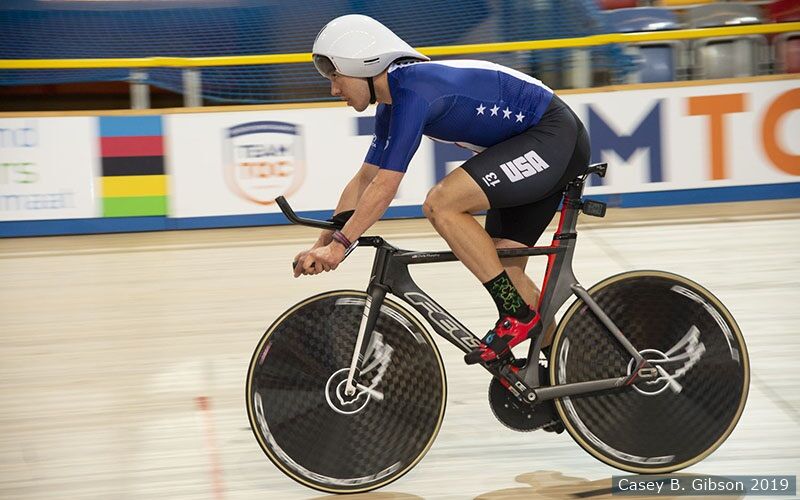
Recently, I had the pleasure of competing at the 2019 UCI Para Cycling Track World Championships, in Apeldoorn, The Netherlands. The championship took place between March 14-17, with the best-of-the-best cyclists around the world taking part, all of whom live with a disability. For those who are not aware, I have lived my entire life with a disability called Brachial Plexus Palsy, or Erb’s Palsy, which manifests in my left arm/shoulder. Erb’s Palsy is a partial to complete paralysis of the extremity caused by damaging the nerve bundle that feed from the neck into the arm by a traumatic birth. I was 11lbs 9oz. and 24” long at birth and my mother is just shy of 5 feet tall, herself. Because of the discrepancy between size of baby and mother, I basically became stuck on the way-out during delivery, so the doctor pulled on my head to get me out, permanently damaging the nerves of the Brachial Plexus on my left side. A Brachial Plexus injury can also be sustained through trauma at any point in one’s life, but the symptoms are usually different than injuries incurred at birth. Enough about me though, let’s talk about how awesome disability can be.
Paralympic Cycling is broken up into 4 broad categories of bikes, with each category broken down further into subcategories known as classifications. This is dependent on how severely a disability affects a person’s ability to perform on a bicycle. The major categories are:
- upright 2-wheel bikes (C1-5 category)
- tandem bikes with an able-bodied pilot and blind/visually impaired stoker (BVI Category)
- hand bikes (H1-5)
- bikes which are modified into a Tricycle for people with severe balance issues (T1-2)
For the indoor track, the only types of bikes that compete are the upright and tandem categories, for both men and women.
It’s probably worth explaining what track cycling is exactly, as well. A track bike is a fixed gear bike with no brakes. It is a very simple machine which can be propelled up to and around 45 miles per hour. The field of play of track cycling is called a velodrome. The velodrome is an oval-shaped track which is banked at between 32°-47°, which are often constructed of smooth wooden planks or concrete. The length is generally 250 meters or 333.3 meters long. The event distances of track racing are also conducted in kilometers, which is why the length of the tracks are simple fraction of a kilometer. Although it may sound dangerous to go those speeds on a bike without brakes, it’s actually exceedingly safe and a lot of fun! Going around the banking at speed feels like a roller coater that you are in control of.
When I go to a Para Cycling event, I share 2 main attributes with all of my fellow competitors: living life with a physical disability, and a passion for riding a bike. Many para cyclists use adaptive equipment on their bikes which enable them to experience the joy of competition. The range of impairment is mind-boggling. You have people with relatively minor upper or lower body paralysis, amputees of all variety, to people who had strokes which weaken one side of the body, and people with severe cerebral palsy. Not all disabilities are visible or immediately evident, but everyone has something going on with a disability which they negotiate to race a bike.
When I watch these people compete, I’m simply filled with awe. Disability is awesome in this case. Having a disability is not awesome, don’t get me wrong, but pursuing excellence with a disability is definitely awesome. However, disability is not the point in Para sport. Disability is the common ground we all share, the equal playing ground, but it’s not why we do what we do. The term “inspiration” may not seem like a dirty word, but it has a connotation to a para athlete that implies that having a disability by its nature casts a dark shadow on our lives, that we somehow have to muster up the will power to find joy in our lives. We are normal people who want to do normal things. It’s not inspirational to pursue things that you like to do. It is awesome, though, to actually do it. It’s awesome if you have a disability or not. Para sport is about passion for sport itself and discovering where human potential lies, and that is awesome.